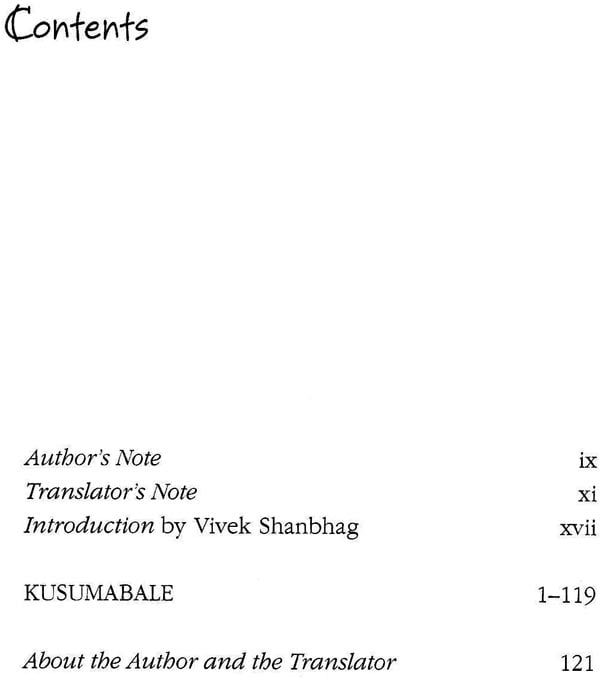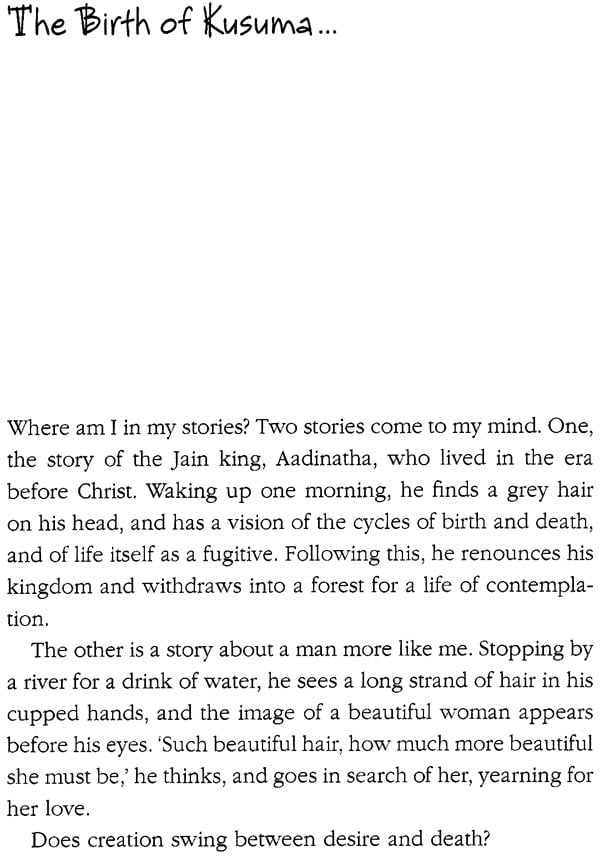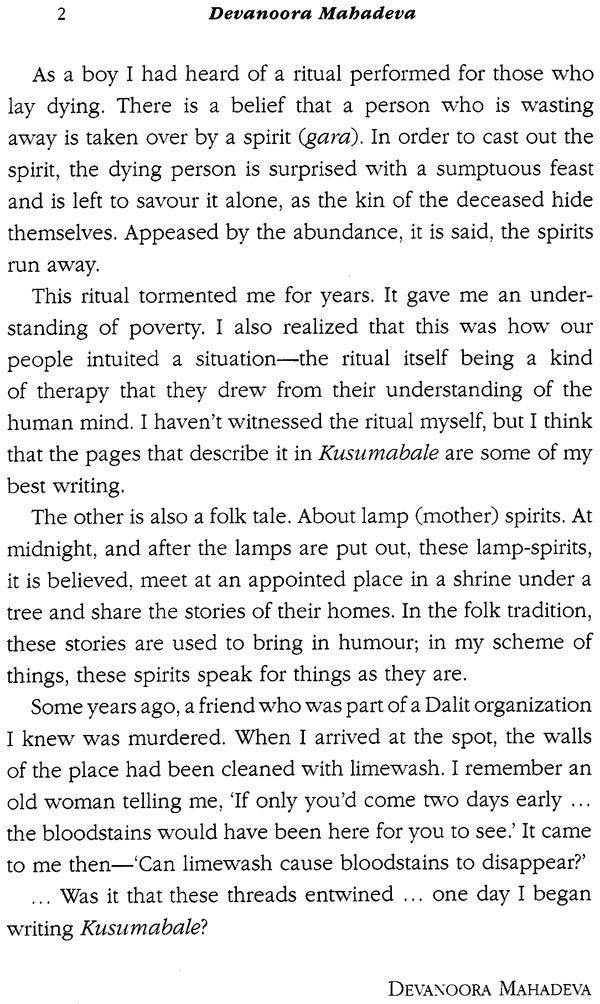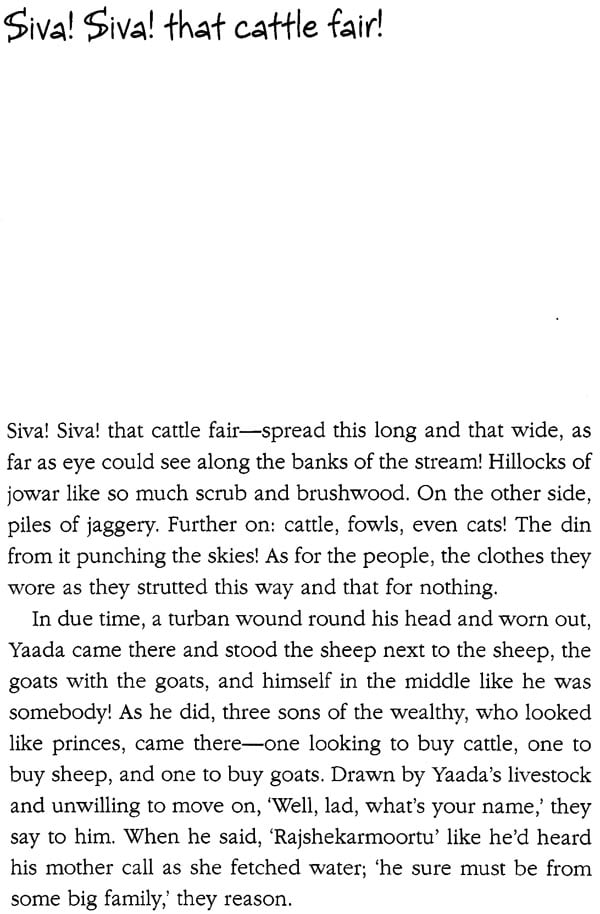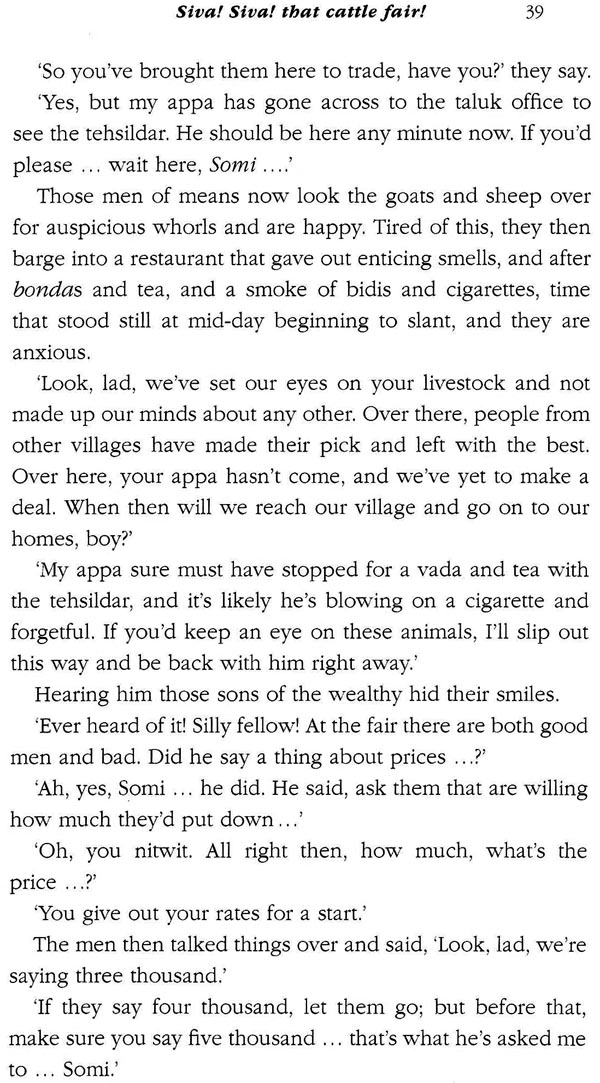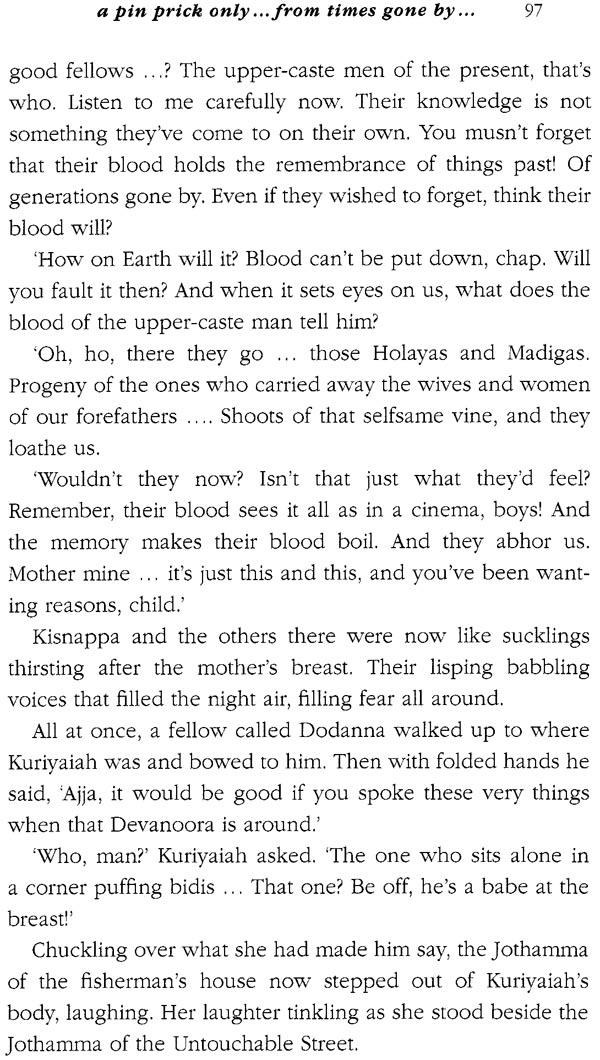
Kusumabale
Book Specification
| Item Code: | NAR949 |
| Author: | Devanoora Mahadeva |
| Publisher: | Oxford University Press, New Delhi |
| Language: | English |
| Edition: | 2015 |
| ISBN: | 9780199457014 |
| Pages: | 148 |
| Cover: | PAPERBACK |
| Other Details | 8.50 X 5.50 inch |
| Weight | 160 gm |
Book Description
Devanoora Mahadeva leads us to a world of spirits ruled by a strong sense of justice. As we listen in, their conversation introduces four generations of a family: Akkamahadevamma; her son Yaada; his son Somappa; and the main protagonist, Somappa's daughter, Kusuma. In this intricately woven cosmos, death casts its shadow. Following the different voices around, we come face to face with the harsh realities of Dalit life.
Steered by the nuances of folk tale and oral tradition, this extraordinary account of feudal oppression presents a rare blend of poetry and prose. A modern classic, when it first appeared in 1988, Kusumabale marked a turning point in modern Kannada literature.Devanoora Mahadeva is one of the most important writers of contemporary Kannada literature. He was awarded the Sahitya Akademi Award for Kusumabale in 1990.
Look at this powerful opening scene of Kusumabale. It's midnight—they say it is the time when stone and water melt—and the guardian-lamp spirits inhabiting the various homes meet at the entrance of the village. During the course of their conversation, curiously, another spirit, who you learn has returned to their midst after a twelve-year gap, joins them. They share their joys and sorrows, tell each other episodes and incidents they have been witness to in the homes they reside in. Devanoora Mahadeva opens you to the world of these spirits that are guided by a strong sense of justice, quite contrary to what often exists in the homes of people. As you listen in, their conversation introduces you to Kusuma, the protagonist of the novel, This kind of a fantastical imagination where the guardian-lamp spirits congregate at midnight to have a conversation is fascinating. With an opening so remarkable, the novel Kusumabale at once declares the extraordinary nature of its world. It captivates the reader's imagination and creates curiosity, even as it initiates the reader into a novel that is far from the ordinary. You soon begin to comprehend that the novel is looking at the world not only with an unusual perspective but also multi-dimensionally. For instance, consider these episodes that appear later in the novel: The old lady Turamma waits all night to fight the clutches of Fate. She has no idea about the form in which it will appear and ends up keeping strict vigil over her daughter's child. Her worries take shape and Turamma enters into a dialogue with it. Similarly, one of the most interesting parts of the novel is the story of Yaada. His transition into a rich man is narrated by the spirit of the cot in his house. Towards the end of the novel, before the gathered leaders of the Dalit Sangharsh Samiti, one of the lamp spirits enters the body of the old man Kuriyaiah, making him the voice of truth.
This is the cosmos of Mahadeva, in whose intricate universe, all the elements of nature co-exist. Here, the spirit speaks, and the cot has a living spirit within it. Worry has a form, and Fate an appearance. When the Dalit Movement gains momentum in the village, almost simultaneously the spirit enters Kuriyaiah. Such an integration of the disparate is Mahadeva's worldview as well. Since everything is interrelated in this universe—all actions, good and bad occurrences—it not only bears a connection with man but with the total ecosystem itself. This is not merely a matter of moral, social, or progressive positioning for Mahadeva; it is organic to his nature and intrinsic to his personality. Kusumabale embeds within itself a unique vision that has been impossible for other modern Kannada writers. Hence, what would perhaps have remained as mere technique in other novels appears as natural as breathing and becomes a complete experience in Kusumabale. It is probably for these reasons that the narrative of Kusumabale had to inevitably be a mix of the prose and lyric forms.
The first Kannada novel was published 120 years ago. The social changes that took place during the last century—a new value system that entered with modernity, the happenings in pre- and post-Independence period, conflict and struggle with western culture—when examined in entirety, reveal that society itself is passing through a phase of disquiet. It was only natural that the novel, as an artistic form, was effective in capturing such a state of mind, thereby attracting talented writers. This form which gave writers the freedom to reject the past and write with novelty attracted Kannada writers. Very soon, Kannada began to sow the seeds of the novel in its own soil and reaped a new harvest. In these 100 years, the extent of experimentation that the Kannada novel has experienced is certainly a matter of surprise. Several outstanding works on par with world classics have been produced during this period. The plots of these novels are native to our soil and have even traversed deep into rural life. Some have historical and mythological subjects, while others are located in the urban space. Even the corporate world has been depicted. If realism was dominant during the Navodaya period (Kannada literary renaissance), in the Navya (Modernist) movement, the Kannada novel gained symbolic and metaphorical strength, and resulted in excellent works. In the initial stages, the choice of subject and structure was either an imitation of the western novel or that which was inspired by it.
**Contents and Sample Pages**
